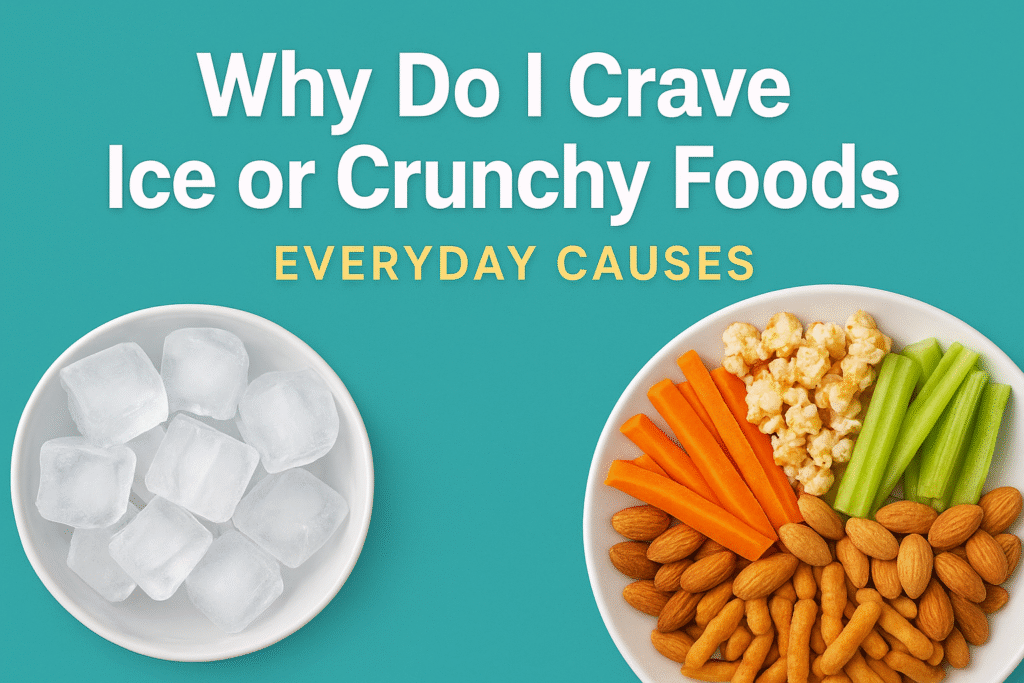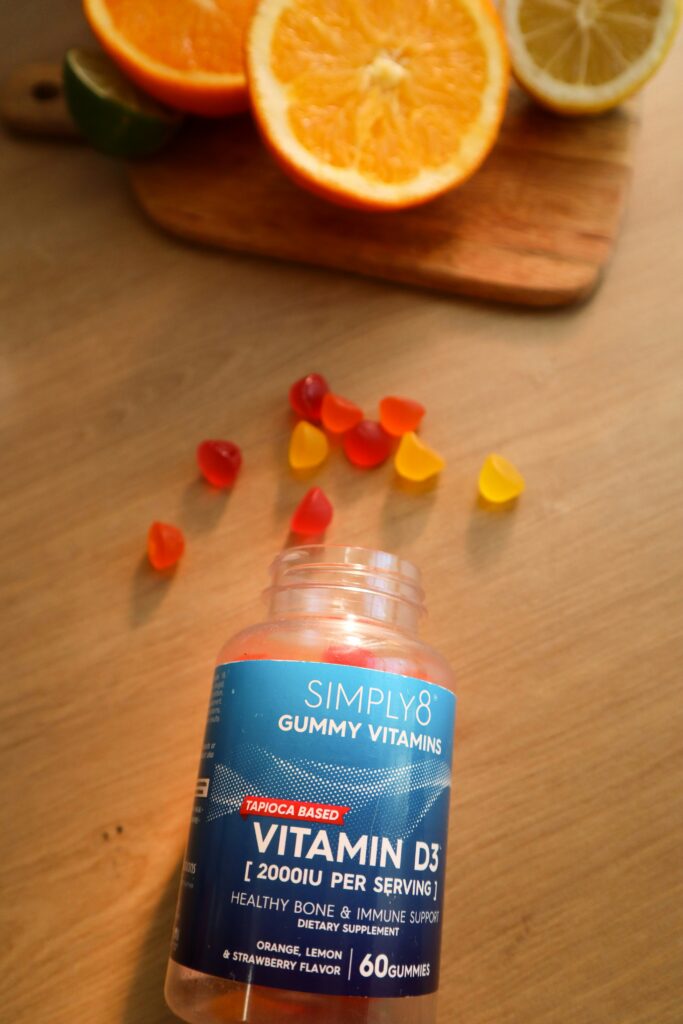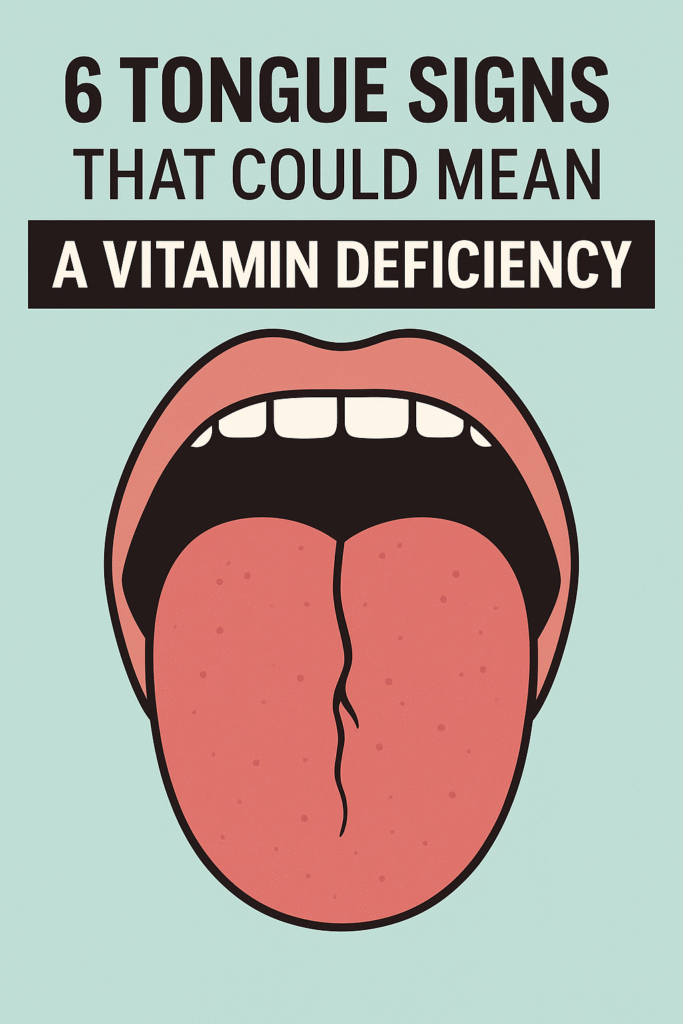
⚠️ Affiliate Disclaimer: This post may contain affiliate links, which means I may earn a small commission — at no extra cost to you — if you make a purchase through one of these links. I only recommend products or services I genuinely trust and believe can provide value. Thank you for supporting My Medical Muse!
Why You Crave Ice or Crunchy Foods: 7 Powerful Everyday Causes
Why Do I Crave Ice or Crunchy Foods? Everyday Causes
Cravings are a fascinating part of human behavior, some people find themselves drawn to sweet treats like chocolate, while others can’t resist the salty satisfaction of chips. But there’s another type of craving that often puzzles people, the strong urge to chew on ice or munch on crunchy foods.
If you’ve ever caught yourself constantly scooping ice cubes into your glass just so you can chew them, or repeatedly reaching for carrots, popcorn, nuts, or pretzels because you need that crunch, you may have wondered why does this happen? Is it just a quirky habit, or is your body trying to tell you something?
The truth is, craving ice or crunchy foods isn’t just a random behavior. These cravings can be linked to psychological factors, nutritional needs, or even medical conditions. While many people think cravings are only about taste, the texture and sensory experience of food play just as important a role. In this post, we’ll take a deep dive into the everyday causes behind ice and crunch cravings, their possible health implications, and practical tips to manage them in a healthy way.
Understanding Cravings in General
Before zeroing in on ice and crunchy foods specifically, it’s helpful to understand how cravings work overall. A craving is more than just hunger, it’s a complex interaction between your body, your brain, and your emotions.
Here are some of the main factors that can spark cravings:
- Biological Factors
Your body may use cravings to signal nutritional deficiencies or imbalances. For example, low levels of certain vitamins or minerals can create unusual food urges, sometimes not for taste but for texture. This is why cravings can sometimes feel unrelated to actual hunger. - Psychological Triggers
Stress, boredom, or anxiety often fuel the desire to chew or crunch. For many people, the repetitive act of biting down offers a coping mechanism, distracting the brain and releasing tension. In fact, psychologists note that cravings can work much like emotional self-soothing strategies. - Habitual Behavior
Over time, cravings can become learned patterns. If you consistently grab a bag of crunchy snacks during late-night TV or always chew ice while working at your desk, your brain begins to associate that activity with comfort or focus. Eventually, the craving can appear automatically, even when you’re not truly hungry.
In short, cravings aren’t random, they’re the result of signals from your body and brain, with this foundation in mind, let’s dive deeper into why chewing ice or crunching foods specifically might feel so appealing.
Why Do People Crave Ice? (Pagophagia Explained)
The medical term for compulsively chewing ice is pagophagia. It falls under a broader condition called pica, which refers to persistent cravings for non-nutritive substances such as dirt, chalk, paper, or clay. Among these, chewing ice is one of the most common and socially acceptable forms. But while it may seem harmless, persistent ice cravings can sometimes point to underlying health issues.
Here are the most common reasons why people crave ice:
1. Iron Deficiency Anemia
One of the most well-documented connections between ice cravings and health is iron deficiency anemia. Research has shown that individuals with low iron levels often develop an irresistible urge to chew ice.
Why does this happen?
- The act of chewing ice may increase alertness by stimulating blood flow to the brain.
- For someone experiencing anemia-related fatigue or brain fog, this short burst of stimulation can feel surprisingly relieving.
- Some physicians even treat persistent ice chewing as a red flag to check iron levels in patients.
In many cases, once iron deficiency is corrected through diet or supplements, the ice cravings fade away.
2. Stress and Anxiety Relief
Chewing ice can also act as a coping mechanism. The repetitive, crunchy act provides a form of sensory release, much like chewing gum or tapping a pen. For people dealing with stress or anxiety, chewing ice offers a small but tangible outlet for nervous energy.
3. Oral Stimulation and Boredom
Sometimes ice chewing isn’t about deficiency or stress, it’s simply a way to keep the mouth busy. People trying to cut down on snacking, smoking, or even nail-biting may find that chewing ice gives them a harmless substitute. The texture and crunch provide oral satisfaction without added calories.
4. Cooling Sensation
In hot climates, or during times of dehydration, the cooling effect of ice itself becomes part of the craving. For some, it’s less about the crunch and more about the refreshing chill. Ice chewing can temporarily cool the body, making it especially appealing during summer months or after physical activity.
Why Do People Crave Crunchy Foods?
Unlike ice, which is cold and flavorless, crunchy foods bring an extra dimension to the eating experience, the satisfying texture paired with sound. This combination can feel almost addictive.
Here are the main reasons crunchy foods are so appealing:
1. The Psychology of Crunch
The sound of crunching is not just noise, it’s a form of sensory pleasure. Food scientists call this “food sound salience.” Hearing a crisp, loud crunch makes food feel fresher, more indulgent, and ultimately more satisfying. That’s why brands go to great lengths to engineer the perfect crunch in chips, cereals, and crackers.
2. Stress Relief and Aggression Outlet
Much like ice chewing, crunchy foods can act as a stress reliever. Biting down on something with resistance provides a mini “release,” similar to squeezing a stress ball. When you’re frustrated, restless, or anxious, the physical act of crunching can feel therapeutic.
3. Sensory Stimulation
Crunchy foods are a multi-sensory experience. They engage your:
- Taste buds (flavor)
- Ears (sound of the crunch)
- Teeth and jaw (texture and resistance)
This combination makes them more enjoyable than softer foods, which can feel less stimulating. It’s one reason why popcorn, chips, and pretzels are so hard to put down once you start eating them.
4. Oral Fixation or Habit
For some people, crunch becomes a habit. Eating foods that “crunch back” feels more satisfying than chewing something soft or mushy. Over time, this preference can turn into a daily craving. This explains why many people find diets rich in raw vegetables, nuts, and seeds easier to stick to, they naturally fulfill the “crunch itch” without relying on processed snacks.
Everyday Causes Behind These Cravings
Now that we’ve explored ice and crunchy foods separately, let’s take a closer look at the everyday causes that can explain why people crave them. While some reasons are biological, others are linked to emotions, habits, or lifestyle.
1. Nutrient Deficiencies
One of the most common underlying causes of unusual cravings is a lack of key nutrients.
- Iron Deficiency: This is the strongest and most researched connection, especially with ice chewing. When your body is low in iron, you may unconsciously seek ice as a way to feel more alert or energized.
- Zinc or Calcium Deficiency: A lack of these minerals may lead to cravings for hard, crunchy foods. Your body might be signaling the need for something solid and textured as a substitute for nutrients it’s missing.
- Low Magnesium: People with low magnesium levels often crave nuts, seeds or chocolate, foods that are naturally crunchy. This could explain why your body gravitates toward certain snacks.
2. Stress and Emotional Eating
Stress doesn’t just affect your mind, it influences your cravings too. When you’re tense or anxious:
- The rhythmic act of chewing acts like a calming mechanism, distracting the brain from worry.
- Crunching provides a physical outlet for stress, much like squeezing a stress ball.
- Many people report feeling noticeably “lighter” or more relaxed after eating something crunchy, even if it’s just temporary.
This is why stress often leads people to grab crunchy chips, pretzels, or even ice cubes, it’s not just about flavor, but about release.
3. Boredom and Habit
Not every craving is tied to nutrition or emotion. Sometimes, it’s simply about filling space in your day.
- Crunching gives your mouth and jaw something to do when your mind is idle.
- The sound and texture break up monotony, making time pass more quickly.
- Many people chew ice or snack on crunchy foods during routine activities like working at a desk, studying, or watching TV. Over time, it becomes a habit your brain automatically repeats.
4. Dehydration
Craving ice is often your body’s subtle way of asking for water. When you’re dehydrated:
- Ice provides a quick burst of hydration through melting.
- The cold sensation also tricks your body into feeling refreshed.
- For some, the craving is less about crunch and more about temperature regulation, especially in hot weather.
5. Sensory-Seeking Behavior
Some people naturally crave more sensory input than others. If you enjoy fidgeting with pens, tapping your feet, or listening to ASMR, you might also crave foods that give your mouth extra stimulation.
- Crunchy foods engage multiple senses, sound, texture, and resistance.
- This sensory satisfaction can be addictive, making crunchy foods feel more rewarding than soft alternatives.
Health Implications of Ice and Crunchy Food Cravings
On the surface, craving crunchy foods or chewing ice may seem harmless, but depending on how you satisfy these urges, there can be both risks and benefits.
1. Risks of Chewing Ice
While ice is calorie-free, it’s not entirely risk-free:
- Dental Damage: Chewing hard ice cubes can crack, chip, or wear down tooth enamel.
- Jaw Stress: Excessive crunching may put pressure on your temporomandibular joint (TMJ), causing soreness or long-term issues.
- Underlying Anemia: Persistent ice cravings can be a sign of iron deficiency anemia. If you can’t stop chewing ice, it’s worth checking your iron levels.
2. Risks of Crunchy Snacks
Not all crunchy cravings lead to healthy choices. Many popular crunchy foods are heavily processed:
- Unhealthy Weight Gain: Chips, fries, crackers, and fried snacks are often calorie-dense and easy to overeat.
- Blood Sugar Spikes: Crunchy sweets like cookies, brittle, or caramel corn can cause sharp increases in blood sugar, leading to crashes and renewed cravings.
- Digestive Issues: Even healthy crunchy foods, like raw carrots or cabbage, can cause bloating or discomfort when eaten in large amounts.
3. Positive Aspects
Fortunately, not all crunch is bad news. When managed well, crunch cravings can actually work in your favor:
- Crunchy Fruits and Vegetables: Foods like cucumbers, apples, celery, and peppers are low in calories, high in fiber, and packed with hydration.
- Nuts and Seeds: These nutrient-dense snacks deliver protein, healthy fats, and minerals, making them a satisfying and healthy way to scratch the crunch itch.
- Ice Chewing in Moderation: If you stick to crushed or shaved ice instead of hard cubes, you can enjoy the refreshing crunch with less risk to your teeth.
How to Manage Ice and Crunchy Food Cravings
If your cravings for ice or crunchy foods are frequent, disruptive, or leading you toward unhealthy choices, the good news is that there are practical steps you can take to manage them. Here are some proven strategies:
1. Rule Out Medical Causes
Before trying to tackle cravings on your own, it’s important to make sure there’s no underlying health issue driving them.
- Ask your doctor for a blood test to check iron and nutrient levels.
- Treating conditions like iron deficiency anemia often makes ice cravings disappear almost overnight.
- If other deficiencies (like magnesium or zinc) are found, a balanced diet or supplements may correct them and reduce the urge to chew.
Always rule out medical issues first. Your craving might be a signal your body is sending about what it needs.
2. Find Healthier Crunch Alternatives
Instead of automatically reaching for chips, candy, or processed snacks, stock up on healthier crunchy options that satisfy the same craving:
- Fresh vegetables: carrots, cucumbers, celery, bell peppers.
- Fruits with natural crunch: apple slices, pears, grapes
- High-fiber snacks: air-popped popcorn (lightly salted or plain)
- Protein-rich choices: roasted chickpeas, edamame, nuts, or seeds
Not only do these options fulfill your crunch craving, but they also provide nutrients, fiber, and hydration instead of empty calories.
3. Stress Management Techniques
If you notice that your cravings spike during stressful moments, it’s likely that crunching has become your go-to stress outlet. Instead, try healthier coping tools:
- Practice deep breathing, meditation, or short mindfulness breaks throughout the day.
- Keep fidget tools (like stress balls, pens, or textured objects) nearby for restless energy.
- Use sugar-free gum to satisfy the oral fixation without excess calories or dental damage.
Over time, these practices can replace emotional crunching with more sustainable stress relief.
4. Hydration First
Sometimes cravings aren’t about crunch at all, they’re about thirst.
- Drink a glass of water before grabbing ice or snacks.
- Add a splash of lemon, cucumber, or mint for flavor if plain water feels boring.
- Staying hydrated reduces the body’s need for cooling sensations and prevents dehydration-related cravings.
5. Break the Habit Gradually
If chewing ice or crunching snacks has become compulsive, don’t feel pressured to quit cold turkey. Instead, wean yourself off gently:
- Swap hard ice cubes for crushed ice or shaved ice, which is easier on your teeth.
- Set personal boundaries, allow yourself crunch time during specific parts of the day, instead of all day long.
- Pair crunch with healthy routines, like crunchy veggies during lunch or fruit at snack time.
When to Seek Medical Help
Occasional cravings are normal, but if your cravings are intense, frequent, or disruptive, it may be time to consult a healthcare professional. Seek medical advice if:
- You crave ice obsessively and feel you can’t stop.
- You experience symptoms of anemia, such as fatigue, pale skin, dizziness, or rapid heartbeat.
- Your crunchy cravings lead to unhealthy eating patterns or noticeable changes in your weight.
Don’t ignore your cravings. They can be your body’s way of asking for help.
Long-Term Strategies for Healthy Crunch Satisfaction
If crunch is part of your personality (and for many people, it truly is), you don’t have to fight it, you just need to channel it into healthier habits.
- Incorporate Daily Crunchy Veggies: Build salads or snack plates with cucumbers, radishes, bell peppers, and carrots for natural crunch.
- Snack Prep Ahead of Time: Keep pre-cut vegetables, fruit slices, or air-popped popcorn ready to go so you’re not tempted by chips.
- Practice Mindful Eating: Slow down and actually listen to the crunch. By savoring the sound and texture, you’ll feel more satisfied and less likely to overeat.
- Balance Your Diet: Ensure meals include protein, whole grains, and healthy fats, this reduces nutrient-related cravings and keeps you fuller longer.
- Stay Aware of Triggers: Ask yourself, is my craving biological (nutrient deficiency), psychological (stress), or habitual (boredom)? Awareness is the first step to controlling the urge.
Final Thoughts
Craving ice or crunchy foods may seem like a harmless quirk, but in many cases, it’s your body or mind trying to tell you something. Sometimes the reason is purely nutritional, such as low iron levels linked to ice chewing. Other times, it’s more psychological or habitual, a way to cope with stress, fight boredom, or simply enjoy the satisfying texture of crunch.
- If you crave ice often, make it a priority to rule out iron deficiency with a simple blood test. Treating the root cause can make the craving vanish.
- If you crave crunch, be mindful of your snack choices. Lean into healthier options like crisp veggies, fruits, or air-popped popcorn so you satisfy the urge without compromising your health.
- If your craving feels compulsive or disruptive, don’t hesitate to talk with a healthcare provider. It’s better to address the cause early than ignore the signals.
At the end of the day, cravings are not your enemy, they’re a form of communication. By listening to them, you gain valuable insights into your health, your habits, and your emotional needs, with a little awareness and smart choices, you can manage your cravings in a way that supports your well-being, while still enjoying that oh-so-satisfying crunch
👩⚕️ Need Personalized Health Advice?
Get expert guidance tailored to your unique health concerns through MuseCare Consult. Our licensed doctors are here to help you understand your symptoms, medications, and lab results—confidentially and affordably.
👉 Book a MuseCare Consult NowRelated Blog Post You Might Like:
- Why Do I Get Dizzy and Nauseous in the Shower? 7 Powerful Causes & Fixes
- 7 Powerful Reasons Why Your Ears Ring Randomly for a Few Seconds
- Foot Cramps at Night: 9 Causes and Natural Relief Tips
- Why Does My Stomach Hurt After Drinking Cold Water? 7 Powerful Reasons Explained
- Skin Stings After Shower? 9 Powerful Natural Remedies That Work
- Muscle Twitches All Over my Body : 10 Powerful Everyday Fixes That Work


